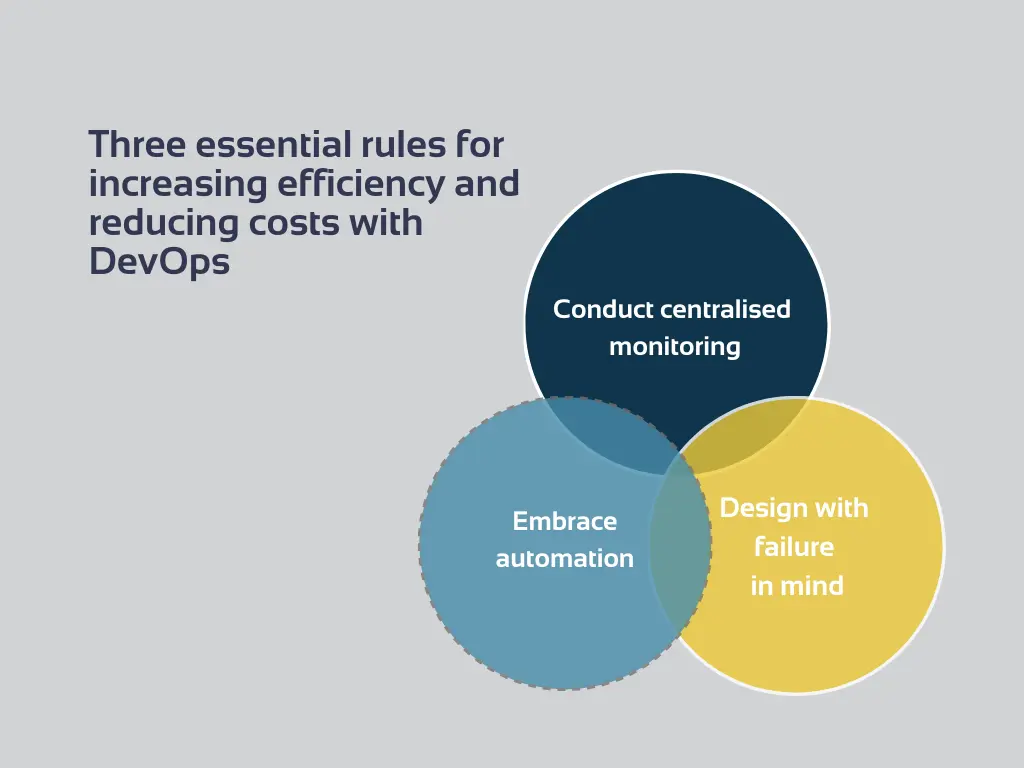DevOps tools and practices: exploit all the benefits of an iterative environment


Constant transformations and developments are indispensable for the IT industry. And DevOps as a work culture is gaining more and more attention from IT companies for a good reason. Before the introduction of DevOps, software companies tended to apply a classic waterful model that implies a sequential flow of defined development stages. Therefore, the input of one step became the input of another one. Yet, adding new functionality pieces or features set required accomplishing around 4-5 silos, which resulted in increased costs and significant delays.
So, the main reason behind the introduction of DevOps is constant cooperation between the development team and operation team, allowing all the stakeholders to respond to changes promptly and move directly to enhancing product quality. The two groups work together from the designing phase to the support one and develop the functions in sync. But how to put the approach into practice? Today, we’re going to dwell on that question in more detail.

1. Conduct centralised monitoring
With the help of different systems (CheckMK, for instance), you can analyse the speed of servers and any shortcomings. Since data is visualised, it is easy to understand how the solution operates in real time. Please, remember: errors tend to get flagged instantly. However, the main idea is to keep up the operational side of the process and ensure their seamless running.
2. Embrace automation
In that case, automation does not mean sacrificing accountability and control. It’s an excellent option to, first of all, begin by simple automation of the tasks which are manual or repetitive by their nature. Once automated, in future, that kind of action can be controlled easily by your DevOps team.
3. Design with failure in mind
When you have backups for all tools and applications, you can decrease the dependency on one provider or machine. Some IT firms prefer to run several ISPs simultaneously to achieve the fastest responses. In a nutshell, your company should strive to solve problems as rapidly as possible. Of course, it is also significant to search for new and creative approaches to improve the quality of solutions and services.

Previously, we’ve spoken about the main ideas of the DevOps approach. It’s time to consider the reason behind adopting this model of collaboration. Except for unifying teams for faster product shipments, we have to mention several more:
1. Renewing focus on the clients
First off, DevOps assist in getting back in the customers’ mindset. The aim of creating robust software often goes hand in hand with justifying long development and release timelines. DevOps brings back customers’ perspectives – the need for a functional solution that solves their problems. As far as you concentrate on more minor releases, it leaves more space for immediate feedback and, as an outcome, more seamlessly working software.
2. Simplifying the focus of development
When companies release a vast solution, prioritising a long list of features is an implication. What we mean is that in case of drastic changes, it’s crucial to pay attention to the development stages that are already passed. Alternatively, companies are free to scale back the amount of work to address one problem or maintain one feature each day or week. That’s how you can avoid wasting a significant amount of time looking through multiple issues.
3. Automating systems for a smoother software development
We’ve touched upon this topic before and want to emphasise the importance of automation to save lots of time for solving more complex issues or fueling innovations. Yet, you still need to ensure that the process does not turn into building new technologies just for technology’s sake. Despite the visible benefits of the practice, not all automation are worth the effort and time dedicated to them. The main idea lies in reaping benefits and optimising your time by implementing automatisation.
4. Supporting end-to-end responsibility
It is particularly critical to set expectations and define all necessary specifications. After releasing a solution, the phases of validation, bringing feedback and customer education have to come into play. In this context, implementing DevOps can highlight those areas of work that need unification. After all, not only the technologists need to join their efforts for a better result and obtain a competitive advantage.

PNN Soft has been developing programming products for 20 years, and we hone our skills to put our ideas into cutting-edge services and solutions. We developed a large amount of complex software using the DevOps approach. In this process, special attention is paid to cybersecurity and the safety of customers’ data.
We aim to achieve an in-depth understanding of individual companies’ goals and expectations. That is why our clients prefer long-term partnerships.
PNN Soft prioritises Agile, Scrum, and RAD methodologies to communicate with clients effectively, satisfy customers’ expectations and obtain more flexibility. Our Agile experts include software developers, GUI designers, testers, managers, and technical writers.
If you are thinking about custom software development in line with DevOps practices, fill out the form below.